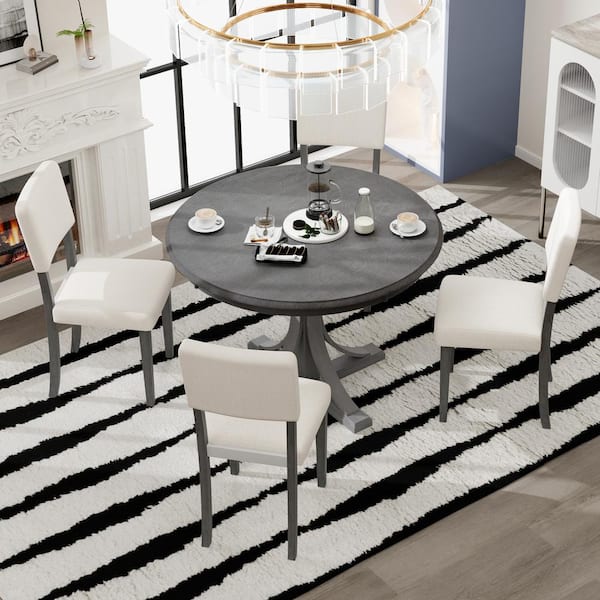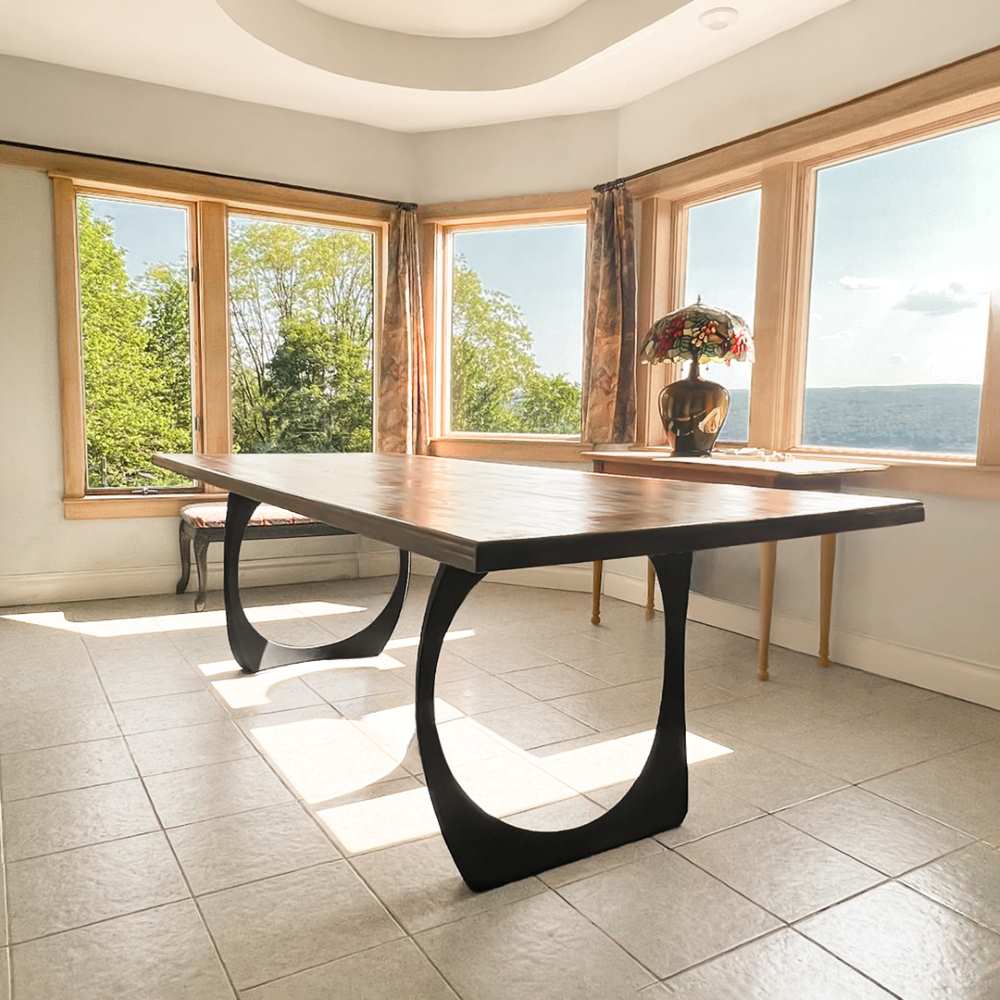From Conventional to Modern: Discover the Ideal Dining-room Table Legs for Your Design
While traditional styles such as cabriole and transformed legs evoke a feeling of classic elegance, modern designs like barrette and geometric options provide a possibility for striking visual passion. As you take into consideration these aspects, the inquiry remains: just how can you seamlessly incorporate these diverse leg styles to develop a harmonious eating experience?
Understanding Table Leg Styles
The selection of dining room table leg designs can significantly affect both the aesthetic appeals and capability of the room. Each leg style adds special aesthetic components and practical attributes, satisfying varied layout preferences and usage demands. Comprehending these styles is important for choosing the appropriate table that straightens with your total interior design vision.
As an example, tapered legs offer a tidy, traditional look that can enhance a room's elegance, while stand bases supply stability and take full advantage of legroom, making them excellent for smaller sized spaces. Barrette legs, a characteristic of mid-century modern design, present a commercial panache, enabling an airy, open feeling. In a similar way, trestle legs stimulate rustic beauty, giving durable support and a sense of timelessness.
In addition, the choice of materials plays a substantial role. Wooden legs can bring warmth and texture, whereas metal options frequently share a streamlined, contemporary vibe. Eventually, understanding table leg designs is vital for producing a cohesive eating area that shows individual style while making sure usefulness and comfort. By thoughtfully taking into consideration these aspects, you can enhance both the aesthetic and practical appeal of your eating space.
Typical Table Leg Options
When selecting dining-room table legs, conventional alternatives typically personify classic beauty and craftsmanship. These layouts mirror a rich heritage and a dedication to top quality, making them perfect for those that value classic looks.
Among one of the most renowned typical leg designs is the cabriole leg, identified by its elegant bent shape. This style usually includes attractive makings and is most typically located in Queen Anne and Chippendale furnishings. An additional popular option is the transformed leg, which boasts a series of smooth, rounded shapes that offer a timeless look while preserving stability.
In addition, the straight leg, while easy, provides a durable and unadorned structure that can mix flawlessly with a variety of tabletop designs. For those attracted to ornate describing, claw-and-ball feet legs evoke a sense of splendour and can work as a sensational focal factor in any kind of dining area.
Lastly, stand bases, although not strictly legs, provide an alternative traditional alternative that permits ample legroom and can be beautifully sculpted. Each of these standard leg designs adds to the overall atmosphere of a dining-room, weding function with visual appeal.

Modern Table Leg Layouts
Modern table leg designs use a diverse array of styles that stress ingenious materials and tidy lines. These styles often focus on performance while offering as striking centerpieces within an eating area. Minimal aesthetics prevail, with legs crafted from materials such as steel, glass, and engineered wood, which add to a airy and modern feel.
One popular layout is the hairpin leg, defined by its slim, tapered structure that supplies security without overwhelming the table top (dining room table legs). This design is frequently located in mid-century contemporary furnishings and can easily complement different table forms. An additional trend is making use of geometric forms, where legs might handle angular or unbalanced types, including aesthetic interest and a touch of virtuosity

Blending Styles for Distinct Spaces
Frequently, property owners seek to create distinct dining spaces that mirror their individual style by blending various design components. This technique enables for the consolidation of diverse aesthetic appeals, leading to a harmonious yet distinctive setting. Coupling a rustic wood table with smooth, modern steel legs can develop a distinctive comparison that elevates the room's general appeal.
In addition, integrating vintage table legs with contemporary table tops can evoke a sense of background while preserving a modern-day perceptiveness. Such combinations not only showcase specific taste yet likewise urge imagination, allowing home owners to curate an area that really feels both personal and inviting.
Color plays an important function in this blending procedure; selecting table legs that match or comparison with the existing color design can improve visual interest. Whitewashed legs can soften the boldness of a dark table surface, developing a well balanced aesthetic.
Tips for Picking the Right Legs
Choosing the right table legs is necessary for accomplishing both performance and visual allure in your dining area. Begin by thinking about the general design of your room. Standard setups gain from legs that feature elaborate carvings or turned styles, while contemporary areas may require streamlined, minimalist styles.
Next, examine the elevation and security of the legs. dining room table legs. Basic eating tables range between 28 to 30 inches in elevation, so make certain the legs enhance this measurement for comfort. Furthermore, durable products, such as wood or steel, can boost stability and long life
Review the leg form too-- alternatives include directly, tapered, or stand styles. Straight legs use a traditional look, while tapered legs can include a touch of sophistication. Pedestal bases give enough legroom and are perfect for smaller spaces.
Verdict
In summary, selecting the suitable dining room table legs calls for cautious consideration of both traditional and contemporary designs. By balancing leg design, elevation, and material with the overall décor, a natural and inviting ambience can be accomplished.
The variety of dining room table leg designs can considerably affect both the aesthetics and performance of the room. Eventually, understanding discover here table leg designs is vital for creating a cohesive dining area that reflects individual design while making sure practicality and convenience.One read this article of the most famous traditional leg designs is the cabriole leg, characterized by its stylish bent shape. Straight legs supply a traditional appearance, while tapered legs can add a touch of style.In summary, choosing the perfect eating room table legs calls for careful factor to consider of both modern and conventional designs.